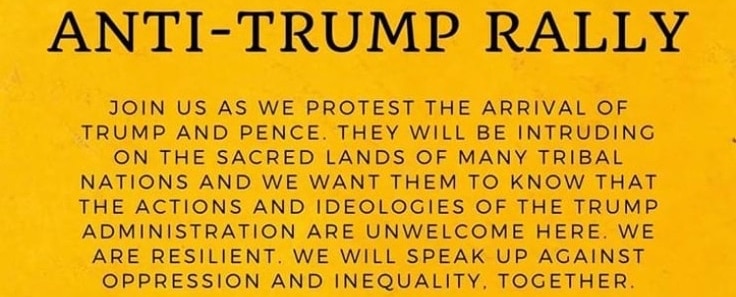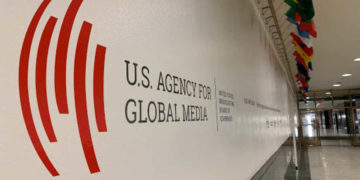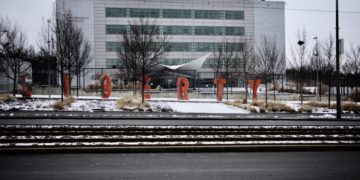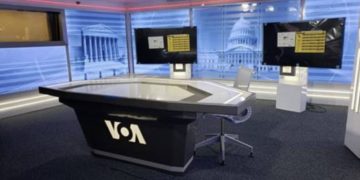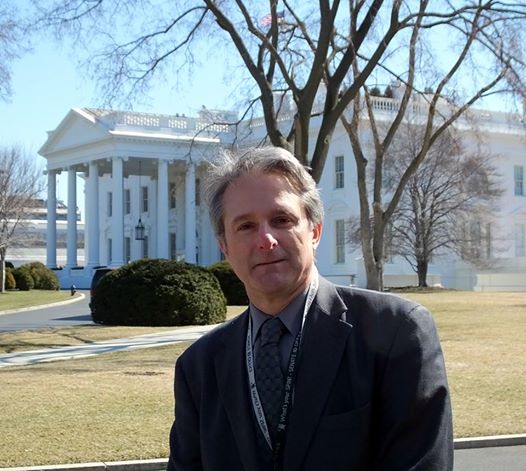USAGM Watch Commentary
Many U.S. news media outlets have reported that President Trump may have lost at least some states in the 2020 presidential election and Democratic Party candidates may have won some congressional and state races because Native Americans voted overwhelmingly against Trump and against Republicans. In politics, politicians usually get what they deserve, but there is also the question whether media coverage was fair and accurate, and therefore free from partisan propaganda, especially by U.S. taxpayer-funded Voice of America (VOA) in the $800 million U.S. Agency for Global Media (USAGM).
VOA is, by U.S. law, mandated to “represent America, not any single segment of American society, and … therefore present a balanced and comprehensive projection of significant American thought and institutions.” While Congress gives money to VOA to target audiences abroad, much of the audience for VOA’s English language content is in the United States since it has been available now for several decades on the Internet, including social media.
The Voice of America had a surprisingly large number of reports about Native Americans in 2020, most of them in some way highly critical of Donald Trump and his administration, even though Native Americans are obviously not a congressionally-mandated VOA audience, which is supposed to be, by law, exclusively abroad. In December 2018, the House Foreign Affairs Committee (HFAC) released an oversight investigation report authored by its former chairman, Rep. Ed Royce (R-CA) who has retired from the U.S. Congress in January 2019. The investigative report centered on the U.S. Agency for Global Media disseminating its program content to US citizens, mostly through social online media including Facebook, and accused VOA of targeting Americans with illegal Facebook ads. At least some VOA editors and reporters have been targeting Americans for partisan reasons that have nothing to do with VOA’s overseas mission.
In July 2020, Voice of America reported that Terry FastHorse, a Sicangu Lakota citizen and Lummi descendant, said of Trump and his planned visit to Mount Rushmore: “He hates Indians.” “There’s no other reason [for him] to be there.” VOA also reported Sicangu Lakota citizen Phil Two Eagle saying: “To me, Mount Rushmore is a symbol of ethnic cleansing, forced assimilation and the theft of our territory.” “Trump is just reminding us of the continuing genocide of our people,” U.S. tax-funded VOA quoted the Native American expressing his opposition to President Trump. VOA did nothing wrong in reporting such a comment, but Trump would no doubt disagree that he “hates Indians” or “supports genocide.” VOA did not ask him, anyone connected with his administration, or any Native American who was supporting him to respond to these incendiary charges. The VOA report had three references to “racism” and a large image of a poster for an upcoming anti-Trump rally in Keystone, South Dakota. Also in the VOA report was an image of “FOUR RACIST PRESIDENTS”: George Washington, Thomas Jefferson, Abraham Lincoln and Theodor Roosevelt. Under its own subheading, “Memorial to racism?,” with a question mark,” the Voice of America described the image as a “Meme circulating on Facebook accounts of Native Americans, who view the four U.S. presidents carved on the face of Mt. Rushmore as architects of their oppression.” VOA did not attempt to check how widespread this view is among Native Americans. The VOA report also included a large meme photo showing the Mount Rushmore Monument being blown up in an explosion.
While the vast majority of Native Americans were undoubtedly opposed to Trump and supported Democratic Party candidates, Voice of America did not, in most of its reporting, include voices of those Native Americans who supported either Trump or other Republican candidates in the 2020 elections or those who may not think that Abraham Lincoln was a racist.
On October 11, Navajo-Hopi Observer reported that Trump released his policy vision for Native Americans via the White House Twitter account. VOA had no report on the White House document or on any admittedly few Trump supporters among Native Americans who were behind his “Natives for Trump” or “Navajos for Trump” 2020 election campaign initiatives announced at that time.
Even though the VOA Charter requires Voice of America news to be “accurate, objective, and comprehensive,” Native Americans, all other Americans and foreign audiences looking at VOA news in English can count on finding much better journalism from Navajo-Hopi Observer than from the U.S. taxpayer-funded VOA employing federal government workers as journalists. It is because the Voice of America has been violating the VOA Charter, which is U.S. law, in a major way, with no one being able to prevent biased and partisan-driven reporting by some of its editors and reporters.
Navajo-Hopi Observer reported that Trump was supporting “developing free enterprise, encouraging business development, reducing regulations on developing natural resources and energy, as well as empowering tribes to manage their own lands through self-governance programs.” The paper also quoted Joseph Cody, 31, of the Yankton Sioux Tribe and Salt River Pima-Maricopa Indian Community, a lifelong Democrat who registered as a Republican in 2018. “I figured out I was being lied to by the media and other people in general,” he said, Navajo-Hopi Observer. VOA also did not report on Navajo Nation Vice President Myron Lizer introducing Donald Trump Jr. at an outdoor rally in Arizona Oct. 15, which marked the launch of a Native Americans for Trump coalition. The Navajo-Hopi Observer is a weekly newspaper serving the Hopi and Navajo nations and the city of Flagstaff in northern Arizona.
The Voice of America should have reported, and did, that Native Americans suffered disproportionately from COVID-19 and the vast majority were unhappy with the Trump administration’s handling of the pandemic, but VOA also had an obligation to report any responses to such criticism from the administration and on Trump White House’s attempts to woo Native American communities. The lack of such reporting from the Voice of America to balance numerous accusations of “racism” leveled against Trump and his supporters has turned VOA into a domestic partisan propaganda tool. After the November presidential election, VOA English newsroom failed to report that Trump, despite losing the presidency, managed to increase his support among Latinos and African Americans, although apparently not among Native Americans, and that Republican Party candidates did surprisingly well among some minorities and immigrant groups. During the presidential election campaign, the VOA English newsroom almost never reported on immigrants and immigrant leaders expressing their support for Trump and for the Republican Party while reporting extensively and frequently on criticism of Trump by other immigrants and various minorities.
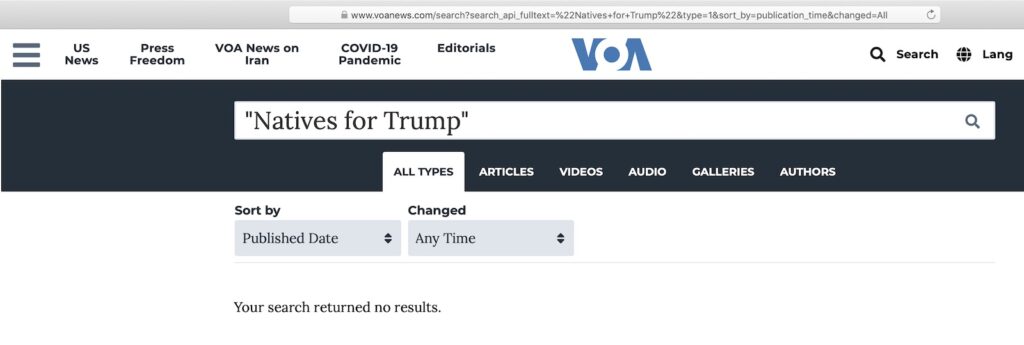
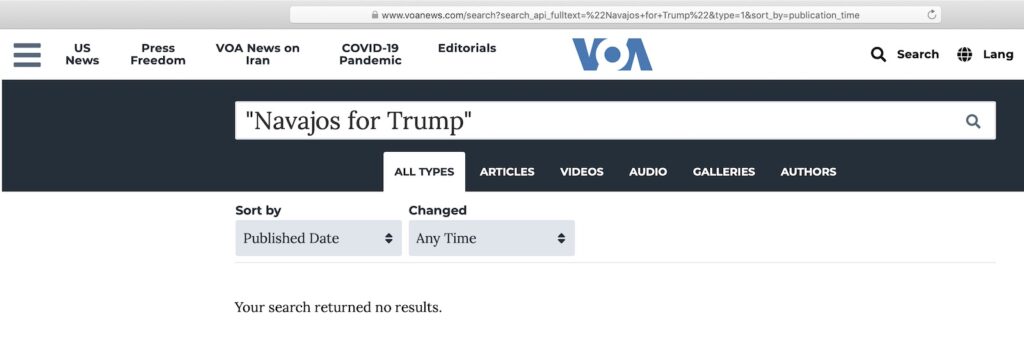
Several Voice of America reporters, most of them in the VOA English central newsroom, have been exposed for posting anti-Trump comments and memes, raising questions about objectivity of their news reporting. One VOA newsroom reporter posted a series of tweets calling for punishment of Covington High School students when they were confronted by a Native American leader. The VOA reporter called them “racist Catholic schoolboys” without doing the necessary checking of facts. As it turned out, the students were not at all at fault in the incident, but the Voice of America, CNN, The Washington Post and other media outlets initially presented them as responsible for provoking a confrontation. CNN and The Washington Post later settled libel lawsuits brought against them by one of the students. The Voice of America reporter deleted the entire VOA work-related Twitter account in which tweets threatening Covington students were posted. VOA did not apologize for its inaccurate reporting or its reporter’s tweets.



Navajo-Hopi Observer
Trump administration releases vision for Native Americans

VOX
How the Navajo Nation helped push Democrats ahead in Arizona
Indigenous voters are often forgotten about. But they may have been key in turning swing states for Democrats, a VOX article said.
By Rachel Ramirez Nov 10, 2020,
6:30pm EST

VOICE OF AMERICA
Native Americans Angry Over Trump Visit to Mount Rushmore
By Cecily Hilleary
July 02, 2020
05:05 PM
Native Americans are expressing outrage over President Donald Trump’s planned fireworks display Friday at Mount Rushmore in South Dakota, a monument on land they say was stolen from them more than a century ago.
They also question the timing of the event, scheduled during a period in which Americans struggle to come to terms with racism and police violence, and underfunded tribes battle the spread of COVID-19.

“He hates Indians,” Terry FastHorse, a Sicangu Lakota citizen and Lummi descendant, said of Trump. “There’s no other reason to be there.”
Fellow Sicangu Lakota citizen Phil Two Eagle agreed. He is executive director of the Sicangu Lakota Treaty Council, which works to assert the treaty rights of the Oceti Sakowin Oyate (Seven Council Fires), the proper name for the historic confederation of tribes with claims to the Black Hills.
“To me, Mount Rushmore is a symbol of ethnic cleansing, forced assimilation and the theft of our territory,” Two Eagle said. “Trump is just reminding us of the continuing genocide of our people.”
Backdrop
In 1868, the U.S. government signed a peace treaty with Dakota, Lakota and Arapaho leaders, designating as the “Great Sioux Nation” territory that stretched across parts of North Dakota, South Dakota and four other states and guaranteeing the tribes “absolute and undisturbed use and occupation.”
But that was before miners led by General George A. Custer found gold in the Black Hills, setting off a flood of prospectors who demanded protection by the government.
Under pressure from the miners, the U.S. Interior Department sent a commission to negotiate purchasing the Black Hills but refused the tribes’ asking price. Congress then passed an act in 1877 reclaiming the Black Hills and consigned the tribes, at threat of cutting off all their rations and supplies, to five small reservations in South Dakota.
![Letter written by the South Dakota state historian to sculptor Gutzon Borglum [his name is misspelled in the letter] requesting he design and build a sculpture at Mt. Rushmore in the Black Hills of South Dakota. (Image: Facebook)](https://im-media.voltron.voanews.com/Drupal/01live-166/styles/sourced_737px_wide/s3/2020-07/Doane-Robinson-letter-to-Borglum-1924-960-wide_0.jpg?itok=2B2u7ZkT)
The dispute continues. The U.S. Supreme Court ruled in 1980 that the government had illegally seized the Black Hills and ordered tribes be compensated nearly $106 million. The tribes refused the money, wanting the land returned instead. Today, those funds, worth more than $1 billion with interest, sit untouched in Treasury Department coffers.
But South Dakota tribes say it isn’t about the money. They have long cited sacred links to the Black Hills, claims that are supported by ethnographic and historic documents, including rock art with religious themes that dates back millennia.
“We consider the Black Hills as an altar,” said Two Eagle. “We have sacred sites there that tie us to our Lakota astronomy. For thousands of years, we’ve gone there to pray.”
Memorial to racism?

In 1924, the South Dakota state historian commissioned Gutzon Borglum to design and carve a “heroic sculpture of unusual character” in the Black Hills. Three years later, hundreds of workers began blasting the southeastern face of Mount Rushmore, and spent 14 years carving 60-foot portraits of U.S. Presidents George Washington, Thomas Jefferson, Abraham Lincoln and Theodore Roosevelt – leaders that many Native Americans view as racist architects of settler expansion and tribal subjugation.
AP PHOTO NOT REPOSTED
FILE – SCULPTOR GUTZON BORGLUM, LEFT, DIRECTS DRILLERS AS THEY WORK ON THE HEAD OF PRESIDENT GEORGE WASHINGTON AT THE MOUNT RUSHMORE MEMORIAL IN THE BLACK HILLS AREA NEAR KEYSTONE, SOUTH DAKOTA, JULY 22, 1929.
On Friday, they plan on voicing their opposition to both Trump’s visit and the monument itself.
“There’s a rally scheduled in Keystone, which is about a mile away,” said journalist and activist Darren Thompson (Lac du Flambeau and Tohono O’odham), who will travel from Wisconsin to attend. “To my knowledge, there won’t be a protest at the park because it wouldn’t be allowed.”
An image of Mount Rushmore exploding into pebbles and dust has circulated on Facebook, bolstering claims by some conservatives that protesters are planning to topple Mount Rushmore as they have Confederate statues and monuments.

Not possible, said Thompson, who knows the park.
“The security is so tight there, the only way it could be done is if it were an inside job.”
Trump has signed an executive order promising to prosecute, “to the fullest extent possible under federal law” anyone who “destroys, damages, vandalizes, or desecrates a monument, memorial, or statue within the United States” and to withhold funding from state and local police who fail to protect monuments.
Oglala Lakota President Julian Bear Runner told the Argus Leader last week that he believes the carvings should be removed.
“Removed but not blown up,” he said, “because that would only cause more damage to the land.”
Harold Frazier, chairman of the Cheyenne River Sioux Tribe, this week called the monument a “brand on our flesh,” adding that he would be willing to remove it by himself, free of charge.”
Most Native Americans who spoke with VOA prefer to see the monument remain and used as a teaching tool.
“Why can’t we build a museum down at the bottom to honor our people and acknowledge their existence?” asked FastHorse.
Republican congressman Dusty Johnson of South Dakota last week introduced a law that would ban using federal funds to alter, destroy or remove the faces on the Mount Rushmore Memorial.
“These presidents championed the cause of freedom,” he said in a June 25 statement. “Those seeking to remove these iconic faces are undermining the contributions these leaders made in pursuit of a more perfect union.”


